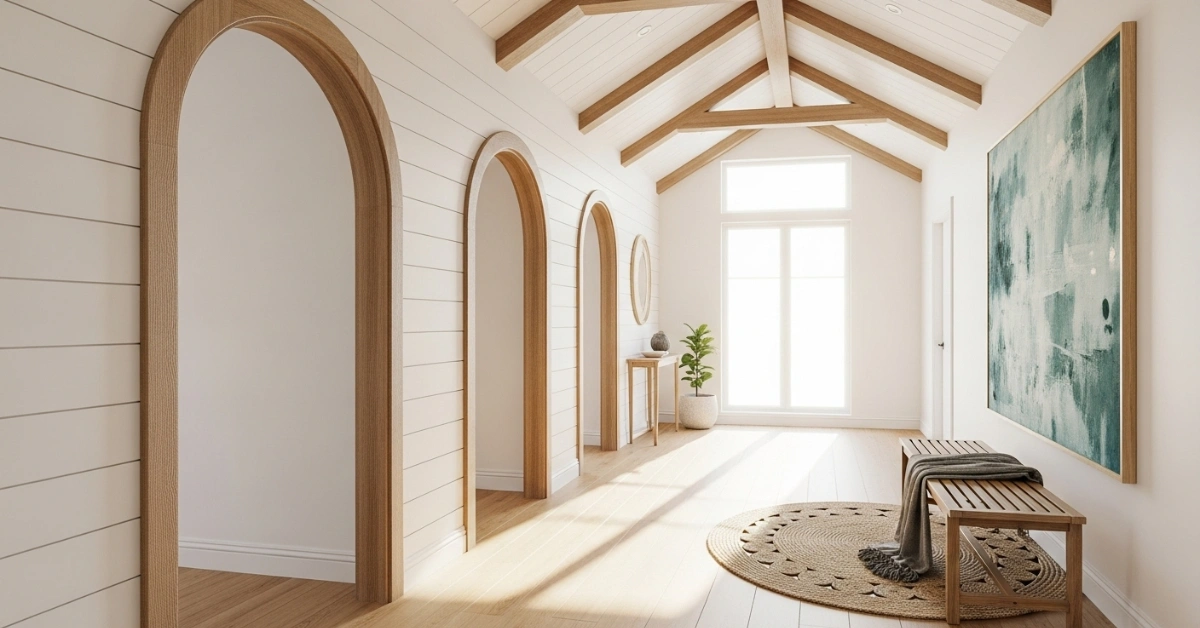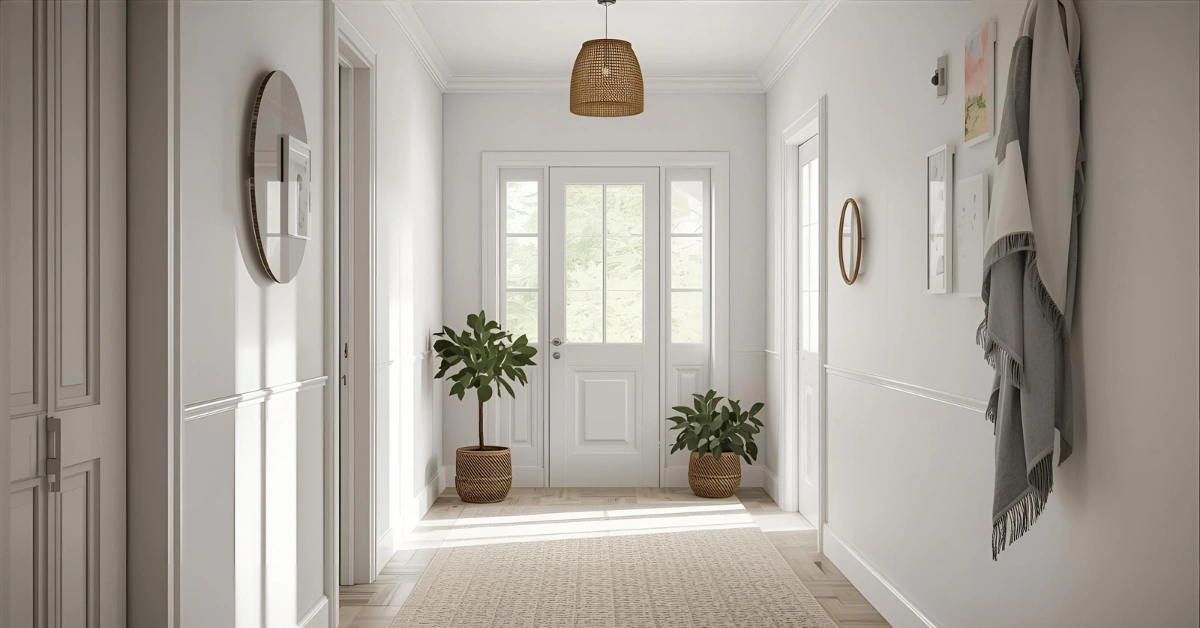15+ Stunning Italian Hallway Design Ideas
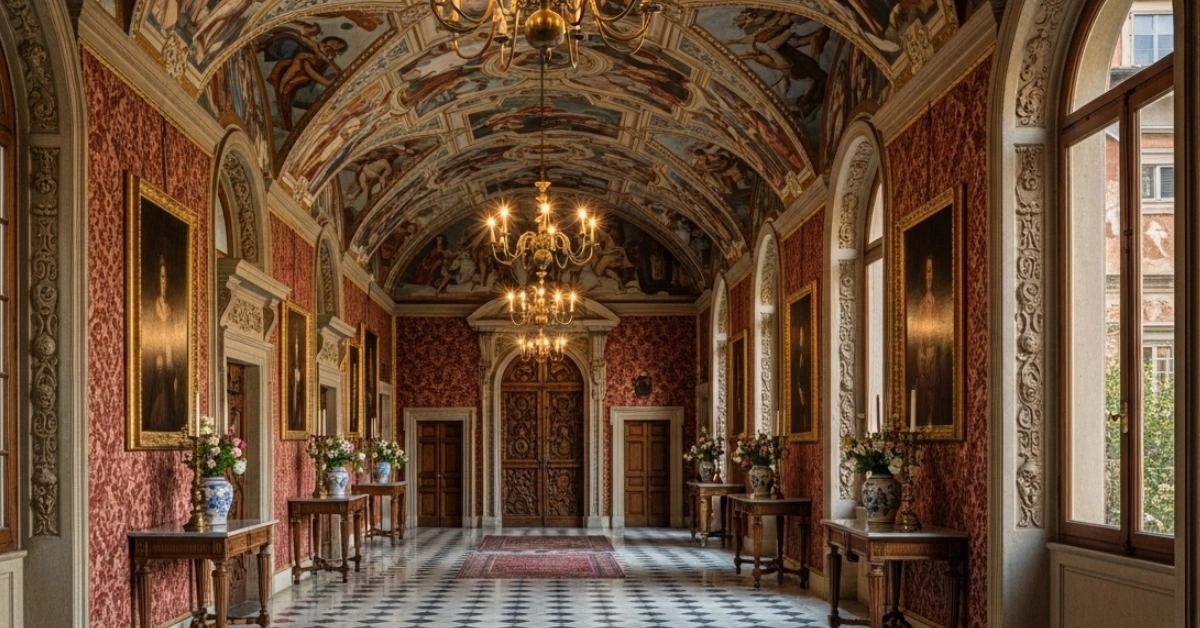
Narrow, dark hallways often feel like forgotten spaces in many homes. They greet guests first but rarely get the attention they deserve, leaving entrances cramped and uninspiring. Homeowners struggle with limited light, awkward layouts, and a lack of personality that makes the whole house feel disconnected right from the door.
An Italian hallway changes everything by blending warmth, elegance, and smart functionality. Drawing from centuries of Mediterranean design, these spaces turn simple passages into inviting transitions that set a luxurious tone. This guide explores practical ways to create your own Italian hallway, with ideas that work in real homes of all sizes.

What Makes an Italian Hallway Special
Italian design focuses on harmony between beauty and everyday use. Hallways in this style feel lived-in yet polished, using natural materials and thoughtful details to create flow.
Roots in History and Culture
Italian hallways trace back to Renaissance villas and rustic farmhouses. In places like Tuscany, entries featured terracotta floors and stone arches to welcome visitors while handling daily traffic. According to the Italian Institute of Architecture, these designs emphasized proportion and light to make narrow spaces feel open.
Designer Maria Rossi, who specializes in Mediterranean interiors, says: “An Italian hallway isn’t just a path, it’s the home’s handshake. It should feel warm and inviting from the first step.”
Key Elements That Define the Look
- Warm Color Palette: Earthy tones like ochre, terracotta, and soft whites reflect Italy’s landscapes.
- Natural Textures: Wood beams, stone walls, and woven rugs add depth without overwhelming.
- Elegant Lighting: Wall sconces and pendant lights create soft glows instead of harsh overheads.
- Functional Beauty: Built-in benches or consoles combine storage with style.
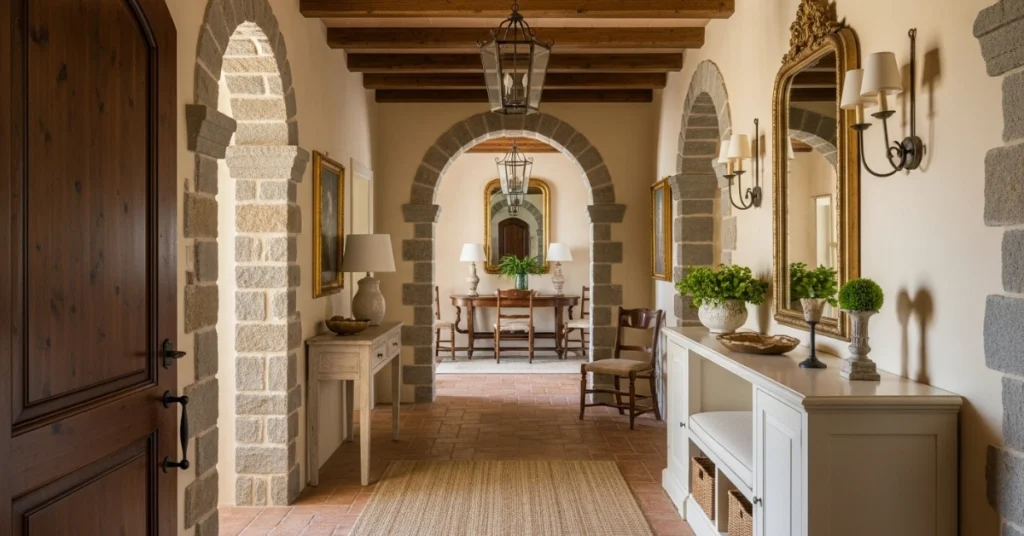
In a recent project in a Chicago suburb, we transformed a 4-foot-wide hallway using these principles. The result? A space that felt twice as wide and instantly more welcoming.
Planning Your Italian Hallway Layout
Start with what you have. Measure your space, note doorways, and consider traffic patterns. An Italian hallway works best when it guides the eye smoothly from entrance to living areas.
Assessing Space and Flow
Narrow hallways benefit from lengthwise designs that draw attention forward. Wider ones allow for focal points like artwork or seating. Always leave at least 36 inches for walking paths.
| Hallway Width | Best Layout Approach |
|---|---|
| Under 4 feet | Linear with mirrors and sconces |
| 4-6 feet | Add a console table on one side |
| Over 6 feet | Include seating or gallery wall |
Choosing the Right Scale
Furniture should fit without blocking movement. A slim console table, no wider than 12 inches, works in tight spaces. In a client’s New York apartment, we used a 10-inch deep antique-inspired table that held keys and mail without crowding the path.
Pro tip: Hang mirrors opposite windows to bounce light and make the Italian hallway feel larger.
Color Schemes for Italian Hallways
Colors set the mood. Italian palettes draw from nature, think sun-baked clays, olive groves, and coastal blues.
Classic Warm Tones
Terracotta walls paired with cream trim create instant warmth. Use matte finishes to avoid glare in narrow spaces. In a Florida home, this combination made a windowless hallway feel sunny year-round.
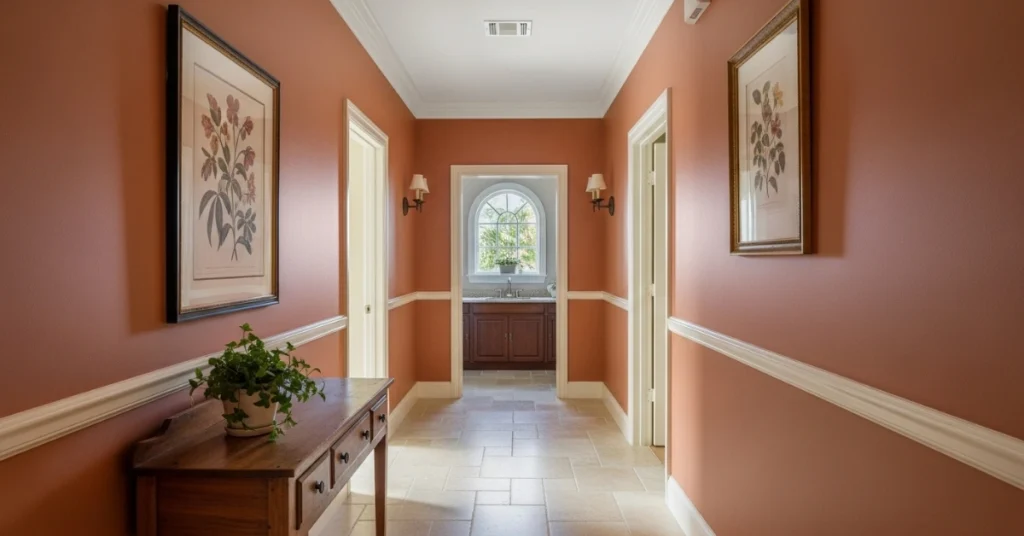
Soft Neutrals with Accents
Beige or greige walls allow artwork to shine. Add pops of sapphire blue or emerald green through accessories. Designer Luca Bianchi notes: “Neutrals are the canvas; accents tell the story.”
Paint Techniques to Try
- Lime Wash: Gives walls a textured, aged look like old Italian villas.
- Color Drenching: Paint walls, trim, and ceiling the same shade for seamless flow.
- Two-Tone Walls: Lower half in deeper tone, upper in lighter for visual height.

Flooring Options That Last
Floors face heavy wear, so choose materials that handle traffic while looking elegant.
Timeless Terracotta Tiles
Handmade terracotta offers warm reddish hues and natural variations. Seal them properly for easy cleaning. In a Texas renovation, hexagonal terracotta tiles created a pattern that hid dirt well.
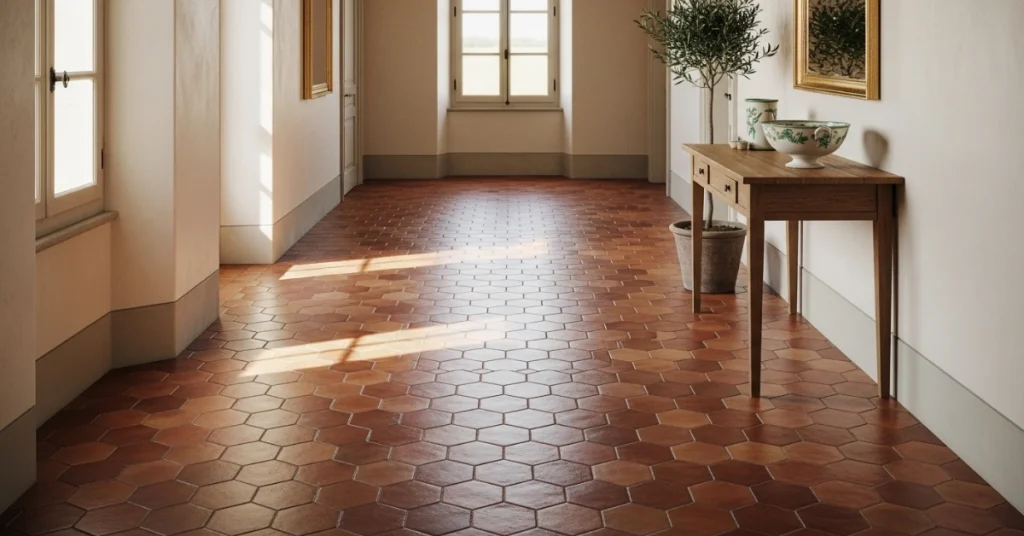
Hardwood with Character
Wide-plank oak in herringbone pattern screams Italian elegance. Opt for distressed finishes to mask scratches. Budget-friendly alternative: Luxury vinyl plank that mimics wood grain.

Stone and Marble Alternatives
Travertine or porcelain tiles replicating marble give luxury without the maintenance. Use larger tiles in small hallways to minimize grout lines and enlarge the space visually.
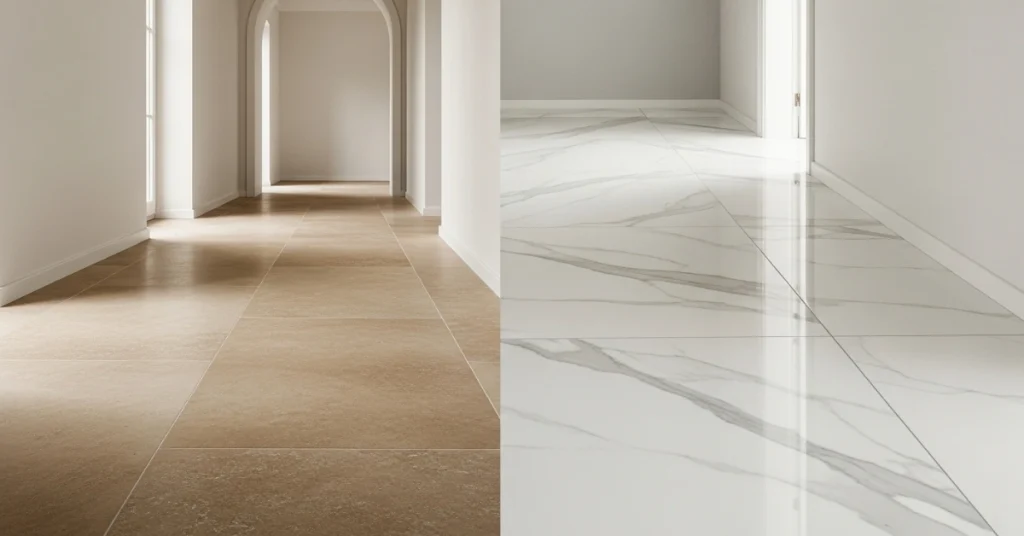
Lighting Ideas to Set the Mood
Good lighting transforms an Italian hallway from dim passage to glowing welcome.
Layered Lighting Approach
Combine three types:
- Ambient: Soft overhead or cove lighting
- Task: Sconces near consoles for key-dropping
- Accent: Picture lights for artwork
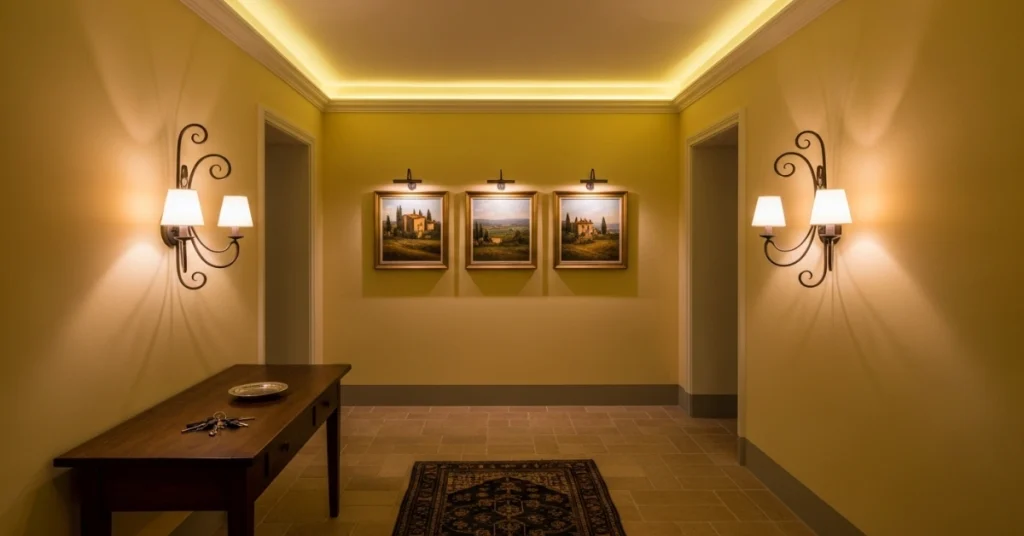
Fixture Styles That Fit
- Wrought Iron Chandeliers: Scaled small for hallways
- Brass Wall Sconces: Add vintage charm
- LED Strips: Hidden under consoles for subtle glow
In a recent project, we installed dimmable LED strips under a floating console. The upward light made 8-foot ceilings feel taller and created drama at night.
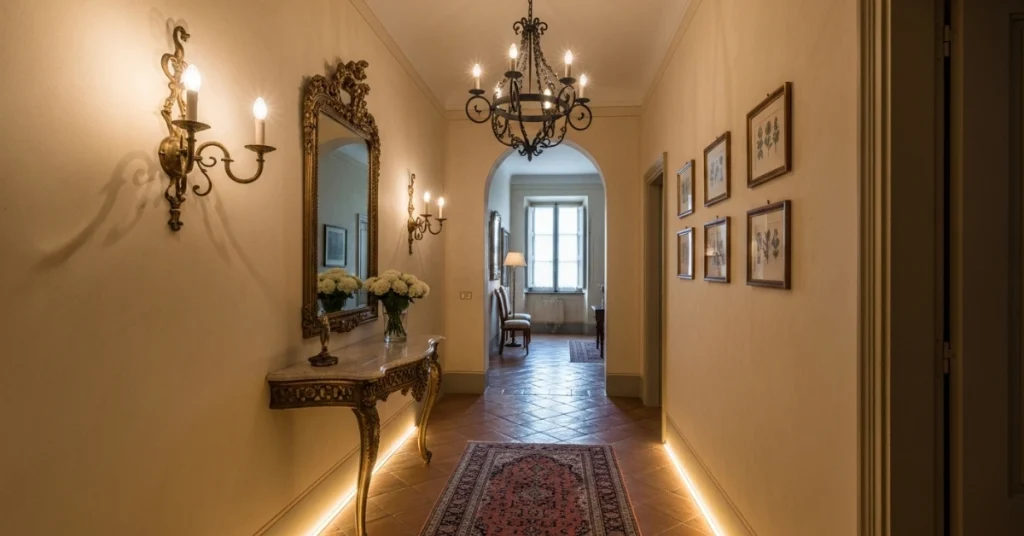
Furniture and Storage Solutions
Keep clutter hidden while maintaining style. An Italian hallway stays functional without sacrificing beauty.
Essential Pieces
- Console Tables: Narrow depth, with drawers for storage
- Benches with Storage: Lift-top seats hide shoes
- Wall-Mounted Shelves: Display ceramics without floor clutter
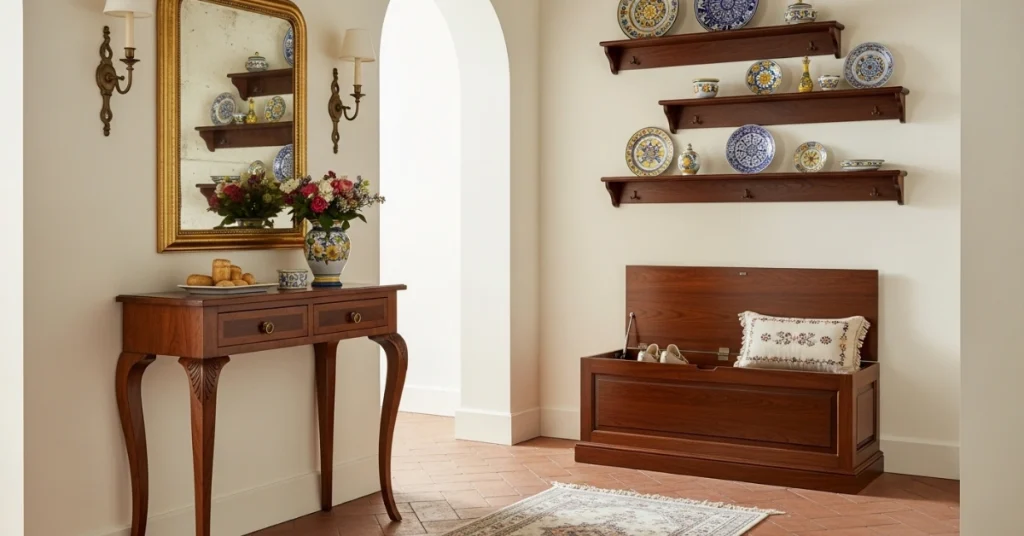
Smart Storage Ideas
| Item to Store | Italian-Style Solution |
|---|---|
| Shoes | Under-bench baskets woven from seagrass |
| Coats | Wall hooks shaped like olive branches |
| Mail/Keys | Ceramic trays on console |
A client in Seattle used a vintage trunk as both bench and storage, perfect for blankets and boots.
Wall Treatments and Decor
Walls offer prime real estate for personality in an Italian hallway.
Wallpaper vs. Paint
Textured wallpaper with subtle damask patterns adds depth. For easier changes, use removable versions. Paint with Venetian plaster technique for authentic stucco look.

Artwork and Mirrors
Create a gallery wall with family photos in mismatched gold frames. Place a large arched mirror at the end of the hallway to double visual space. “Mirrors are magic in Italian design,” says designer Sofia Conti. “They bring in light and make spaces breathe.”

Architectural Details
- Crown Molding: Simple profiles keep it elegant
- Wainscoting: Beadboard painted white for coastal Italian vibe
- Niches: Built-in shelves for displaying pottery
Bringing in Italian Textiles
Fabrics soften hard surfaces and add comfort.
Runners and Rugs
Long, narrow runners in wool or jute protect floors and define the path. Choose patterns inspired by Italian tiles—geometric or floral.
Window Treatments (If Applicable)
Linen Roman shades in natural tones filter light softly. For door windows, add sheer curtains that puddle slightly on the floor for romance.

Plants and Greenery
No Italian hallway feels complete without life.
Best Plants for Hallways
- Fiddle Leaf Fig: In bright spaces
- Snake Plant: Thrives in low light
- Potted Olive Tree: Classic Italian touch

Use terracotta pots or woven baskets. In a dim hallway, we placed LED grow lights disguised as sconces to keep an olive tree thriving.
Accessorizing Your Italian Hallway
Details make the difference between nice and unforgettable.
Must-Have Accessories
- Ceramic umbrella stand
- Vintage brass tray for keys
- Fresh flowers in simple vase
- Scented candles with Mediterranean notes
Seasonal Updates
Switch accessories with seasons:
- Spring: Lemon branches in vases
- Fall: Mini pumpkins on console
- Winter: Pine cones and evergreen sprigs
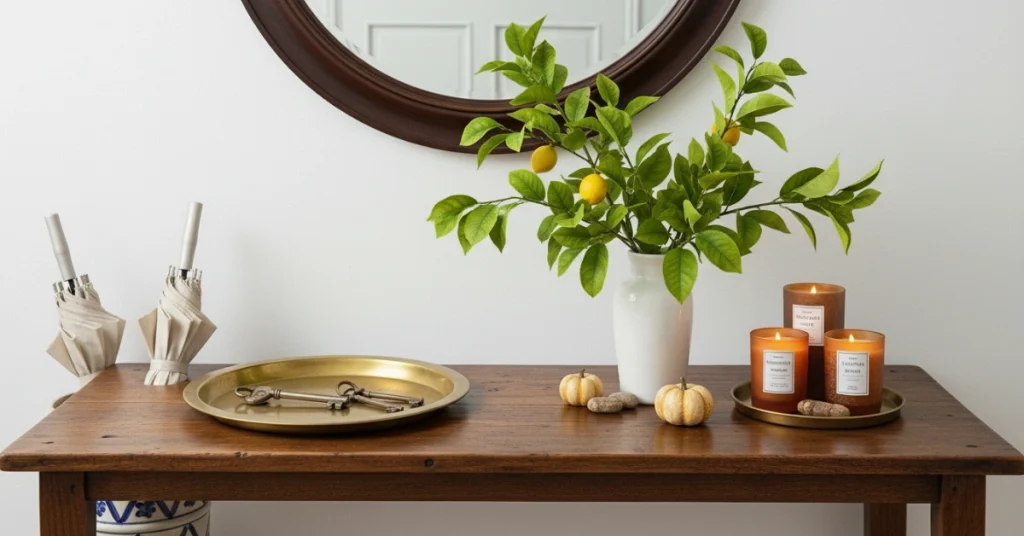
Budget-Friendly Italian Hallway Makeovers
Luxury doesn’t require big spending.
DIY Projects
- Paint your own fresco-inspired mural using stencils
- Refinish thrift store console with chalk paint
- Create faux terracotta tiles with paint techniques
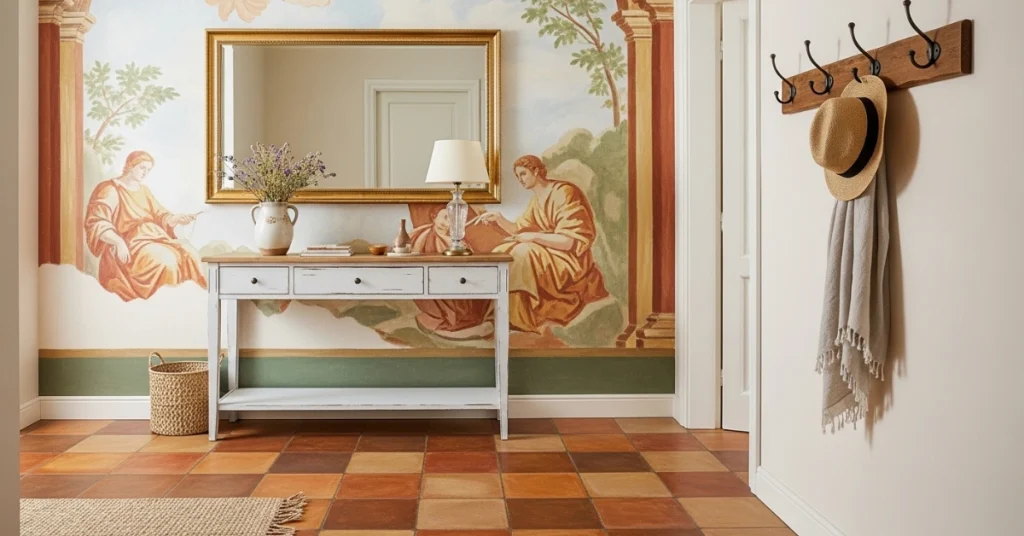
Where to Save and Splurge
| Save On | Splurge On |
|---|---|
| Rugs (buy similar) | Lighting fixtures |
| Accessories | Quality flooring |
| Paint | Statement mirror |
A couple in Ohio spent $800 total by thrifting and DIYing 80% of their Italian hallway transformation.
Common Mistakes to Avoid
Even with good intentions, pitfalls happen.
Overcrowding the Space
Resist filling every inch. Leave breathing room. If you can’t walk with arms outstretched, edit.
Ignoring Proportions
Tiny art in large hallways looks lost. Scale pieces to wall size. Use painter’s tape to mock up arrangements before hanging.
Poor Lighting Choices
Avoid single overhead fluorescents. They flatten the space. Always layer light sources.
Real Italian Hallway Transformations
See the difference in action.
Before and After: Narrow City Apartment
Before: Dark, cluttered with shoes everywhere. After: Terracotta runner, sconces, and floating console created flow. Mirror at end doubled perceived length.
Family Home Entry Redesign
Before: Builder-grade beige with no personality. After: Lime-washed walls, herringbone wood floor, and built-in bench with storage. Kids’ artwork in gold frames added warmth.

Maintaining Your Italian Hallway
Keep the beauty lasting with simple care.
Cleaning Tips
- Dust sconces weekly to maintain glow
- Vacuum runners and shake outside
- Wipe console with microfiber cloth

Refreshing the Look
Update accessories every season. Repaint accent walls every 3-5 years. Rotate artwork to keep things fresh.
Conclusion
An Italian hallway turns the most overlooked space in your home into its most charming feature. By combining warm materials, smart storage, and personal touches, you create an entrance that welcomes everyone with style and grace. Start small, perhaps with a new runner or sconces and watch how this transformation sets a new tone for your entire home.
Ready to create your dream Italian hallway? Share your space measurements in the comments, and I’ll suggest personalized starting points. Or download our free checklist for Italian-inspired entryways below.

